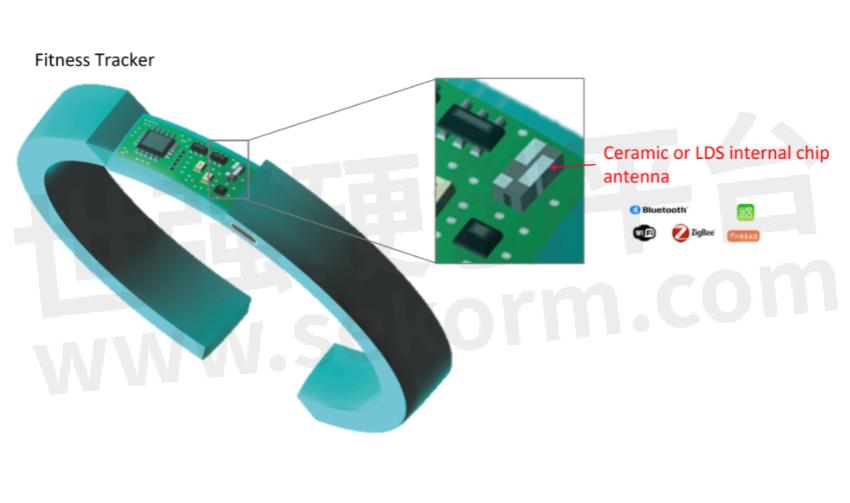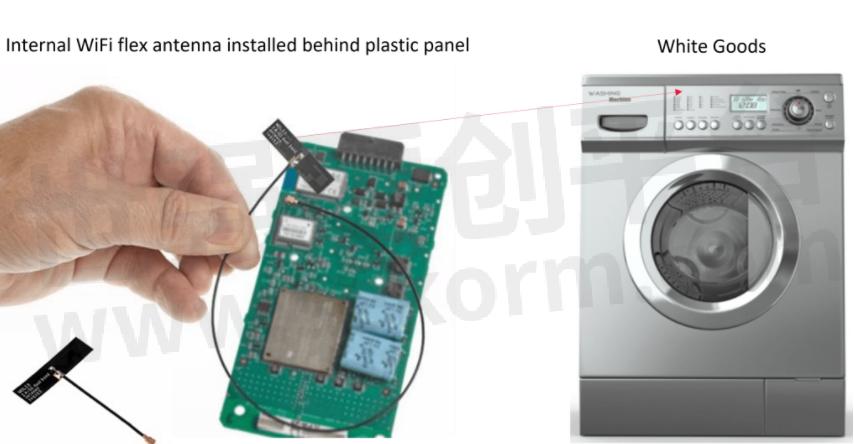Antennas: The Heart of the IoT




Antennas are crucial to the function of connected devices. Address them early in the design process for a smooth and successful outcome.
Antenna systems are gaining prominence as new opportunities emerge to meet the expanding telecommunications needs of IoT and 5G applications. According to a survey by TE connectivity, the top drivers of antenna development and innovation are efficient spectrum use, enhanced service quality, cost optimization, and transparent operations across technologies.
Over 170 engineers responded to questions about their biggest challenges when designing wireless systems, what designers look for in antenna products and the importance of antenna choice in wireless systems. Efficiency and bandwidth topped the list of challenges, highlighting the need for components that increase throughput and optimize efficiencies. Product performance was identified by many respondents (about 75%) as the most critical selection criterion, also considered by many to be more important than the cost of the product. The importance of antenna systems was further confirmed by more than 60% of respondents saying they choose antenna products at the start of the design process—ahead of other components required for high-performance wireless solutions.
A Bit About Antennas
The main job of the antenna is to convert electric signals to RF signals. “It’s almost like an airport runway. The signal is on the board and when it hits the antenna, it is sent into the air (space),” explained Matt McWhinney, business development manager for micro solutions at Molex. Conversely, the antenna also takes signals from the air (space) and converts them from electromagnetic signals into electronic signals.
Efficiency is the measurement used to compare one antenna to another. Many experts consider at or above 50% efficiency very good. Measured ‘effective’ efficiency is a function of how well the antenna performs once installed and embedded in a device. This is important to note because several factors can affect antenna performance, so choosing the best option is not as simple as looking at a spec sheet. “The presence of other metals [like batteries or shields] nearby, as well as where the antenna is placed on the system and how it is orientated [the angle], and a few other factors, can have a net negative impact if an antenna is sub-optimally integrated into the system,” McWhinney said.
Trends and Challenges
Miniaturization. One trend that presents obvious challenges is the desire to embed RF into small devices. One example is the connected doorbell, which has so many components in tight proximity within a small space. “The design challenge is how to best integrate the antenna, or antennas, into that rather small package. What can I keep? How can I most effectively locate the antenna as far away from the battery or the shield covering the microprocessor?” said McWhinney. Additionally, if redundant or additional antennas are needed, the two ideally would have some separation.
In many of these miniature products, especially those that use LTE or 5G signals, the antenna requires a ground plane to perform well. If an LTE/5G SMT (aka “chip”) antenna is used, the ground plane (the PCB) is ideally at least the size of a business card. If the PCB/ground plane is significantly smaller (like a watch or small medallion), essentially there isn’t enough available real estate to allow for good RF performance. Depending on which application/frequencies and antennas are used, embedding an antenna in a small device can get quite challenging – and even very expensive if a custom antenna is needed. McWhinney explained that, for example, to embed a cellular circuit into a dog collar cost-effectively, the designer must begin with the smallest (but most efficient) antenna possible and then get creative to ensure that the ground plane is sufficient. The designer might choose to extend the ground plane beyond the PCB, perhaps into the collar itself. In that case, the collar might need to be somewhat metallic to virtually extend the size of the ground plane.
Always available. Consumers expect that their devices will always have a signal. This creates a scenario where it can make sense to pursue redundant RF options (different frequencies, protocols, alternate antenna-RF circuits). One example of redundancy includes using MIMO (multiple inputs, multiple outputs). Simply put, this means more antennas. One antenna might radiate well but will have some blind spots; multiple antennas won’t likely have the same blind spots. Another option is adding alternate RF circuits/antennas, Bluetooth, or Wi-Fi, and LTE, to act as a backup. LoRa (long-range radio) is also an option when LTE and 5G are too difficult to integrate.
The Three Types of Antennas

There are three types of antennas. The SMT, often called a “chip” antenna, is soldered to a PCB. SMTs typically provide the best efficiency, depending on how well they are designed into the system (i.e., where they are placed and what is around them). SMTs tend to have a slightly lower cost (especially in high volumes) and offer more degrees of design flexibility than other antenna types but can be difficult to integrate optimally into a system.
The second type is an internally cabled antenna. This type is flexible or could even be a printed circuit board. It features an antenna, a coax wire, and a micro connector. These antennas are often easier to integrate as design choices are limited to simple factors such as selecting the proper connector type and cable length, which ensures the antenna is the right size for placement inside the device. “Then it’s a matter of what I would I call ‘rabbit ear, TV antenna tuning’ – such as how we often find optimal antenna orientation (placement inside the module). A simple process of trying a location, testing, and then repeating until satisfied with performance is the way to go,” said McWhinney.
The third type is an external antenna, which might be seen poking out of a router. These are not generally used in IoT applications but are needed if the device is made of metal, as internal antennas cannot transmit through metal.

Antennas are identified and categorized by their rated frequency but to make it easy, antennas often are simply noted by RF protocol, such as Wi-Fi or Bluetooth. Another consideration is bandwidth, and how much data is needed, but when looking at bandwidth needs, designers will first identify which RF protocol, then move to antenna selection. It is worth noting that most IoT devices require the exchange of only a small amount of information, such as for sensing, taking control, or collecting measurement data, as in the case of wearables. So, for many IoT devices, low bandwidth will most likely be sufficient.
For applications where high bandwidth is required, RF protocols such as Wi-Fi and LTE/5G are good choices. Also beware of real-world issues, such as “overbooked” Wi-Fi networks (typically in the 2.4 GHz frequencies). High bandwidth applications would be best served if Wi-Fi is in multiple frequencies (i.e., 2.4 and 5 GHz) and the antennas selected are supportive. Similar considerations exist with LTE/5G data where frequency selection is important.
Start Early, Ask the Experts
Because each application has its unique challenges, working with an RF antenna expert early in the design process is critical for success. Ensuring antenna efficiency and performance requires multiple design-test-redesign-retest iterations ideally handled by those who deeply understand the impact of all the device components on the antenna. Whether that is an in-house RF expert, a proven supplier of RF electronics/antennas, or a consultant, a worthy expert will have the equipment to measure RF performance, including an antenna test chamber. Even if the expert is not fully engaged with testing, it’s a good strategy to have. In the end, McWhinney said, this will help ensure the IoT device has excellent wireless performance and is completed on time.
- |
- +1 赞 0
- 收藏
- 评论 0
本文由耳神666转载自JVT CONNECTORS News,原文标题为:Antennas: The Heart of the IoT,本站所有转载文章系出于传递更多信息之目的,且明确注明来源,不希望被转载的媒体或个人可与我们联系,我们将立即进行删除处理。
相关研发服务和供应服务
相关推荐
Fiberglass Antennas: Durable, Lightweight, and Corrosion-Resistant Solutions
With advancements in technology, the applications of fiberglass antennas will continue to expand. Whether in sensitive environments or everyday settings, these antennas can meet various demands with their superior performance. As 5G and IoT technologies develop, fiberglass antennas will play an increasingly important role in building a smart society.
The Technical Principle of 5G Massive MIMO
Massive MIMO combined with beamforming greatly improves the coverage and access speed of 5G. It provides the foundation for the popularization of technology and the application of subdivided industries in the new era of 5G.
TE Connectivity to acquire antennas business from Laird Connectivity
TE Connectivity (TE) are pleased to announce that TE signed a definitive agreement to acquire the antennas business from Laird Connectivity.
Quectel Introduces New 5G, 4G, Wi-Fi and LoRa IoT Antennas to Complement its Industry-Leading Module Portfolio and Ease Cevelopment Process for Customers
Quectel announces the launch of a series of new antennas to further expand the global antenna offering for Quectel customers. The new antennas include the ultra-wide band 5G antennas, combo antenna series, 4G antennas, LoRa antennas, the Wi-Fi antenna and the GNSS antenna.
PCN#5A 2023 TE Connectivity Laird Eternal Antennas产品变更通知(PCN)
描述- TE Connectivity Laird External Antennas发布产品变更通知,宣布对其部分天线产品编号进行更新。此次变更旨在适应TE Connectivity的编号方案,变更自2023年5月15日起生效。受影响的零件编号列表可通过链接查看,建议客户更新系统中的零件编号以避免未来冲突。
型号- ABFT-L,EXB154.6BN,BB132-L,PTD5-3SMP,QWB406-L,B1443-L,LBT3400,S1044-L,C150-450C,QW8063-L,CN58S,CTNC58,GB8UM,GM8,QWB152,TRA806-17103,EXLXXHT,TRAB806/17103,MB8-L,S1044,S1138-L,TRA821-18503P,B132S-L,A150-L,C150/450CS,CBNC8X-L,TRAB24/49003,EXR154.6BN,GB8UM-L,PTD0.67SMP,CN58S-L,MBNUT-L,YB8966-L,TRA806/17103,CPL9S,S1010-L,TRAB24-49003,QW152,C40-L,B4503,CPL9C,TRAB24-49003P,AB8063-L,MB8,YB4506,LBMB9034-L,TRA24/49003P,FM1,P34-L,SB,ASB,QWB450,001-0001-L,S,S-L,LBT3400-L,MBO,BB1442NS,GM8-L,QWB450-L,GD5W-22/26FEED,MOGSK-L,QW470-L,B7603-L,TRAB806/17103P,CPL9C-L,SB-L,CMUHF58-L,CBNC8X,CN8X-L,G8-L,C144-440CS,PT81.67NN,QWFT120,A8063-L,CPL9S-L,FM1-L,FG821-18503,PTD0-67SMP,QWFT120-L,MB8UT,B1323-L,AFT-L,MB8UT-L,A8963-L,C150/450C,QW152-L,ETRAB821-18503,EXC000SM,EXR154-6BN,TRA821/18503,PTD5.3SMP,C144/440C,A450S,BB4502N-L,TRAB24/49003P,001-0001,CUG175-L,HS34,PCB1000,001-0002,CAP1010-L,A8963,HS38,TRAB821/18503P,YB8966,001-0002-L,LBMB9034,A450S-L,QWB152-L,CAP1010,CTNC8X-L,MAB8UMI16.5,B1323,B1443,CTNC8X,MORNG-L,CAP1015,MOGSK,A150S,EXB154-6BN,C144-440C,P34,ABFT,TRA821-18503,A150,ASB-L,RS1000,TRA24-49003,TRAB806-17103P,CUG175,CMUHF58,QW470,QWRCB-L,TRA806-17103P,TRAB806-17103,EXL**HT,C150-450CS,PT81-67NN,RS1000-L,ETRAB821/18503,MBO-L,EXC000SM-L,CB144-440C,QW8063,PCB1000-L,MORNG,AFT,BB132,G8,A150S-L,QWB800-L,CAP1015-L,CN8X,FG821/18503,TRA821/18503P,CTNC58-L,QWRCB,A8063,BB4502N,CBNC58-L,B4503-L,B7603,TRA24/49003,QWRC,C144/440CS,MBNUT,HS38-L,CBNC58,HS34-L,S1013-L,TRA806/17103P,YB4506-L,TRAB821-18503P,S1138,TRA24-49003P,AB8063,CB144/440C,BB1442NS-L,S1010,B132S,MAB8UMI16-5,S1013,QWB800,C40,GD5W-22-26FEED-L,QWRC-L,QWB406
TE Connectivity(泰科)轨道天线选型指南
目录- Onboard Antennas Vehicle Antennas (Semi) Stationary Antennas
型号- 1-2823602-1,1-2823602-2,2321811-1,1-2316881-1,1-2309605-1,1-2309646-1,1-2823595-1,2344721-1,1-2823595-2,1-2823596-1,1-2823593-1,2344721-2,2332157-1,1-2823594-1,2344721-3,2344721-4,1-2823598-2,1-2823599-1,2344721-5,1-2823599-2,2344721-6,1-2823596-2,1-2823597-1,1-2823597-2,1-2823598-1,2332157-3,2332157-2,2332157-4,1-2823591-1,1-2823592-1
Maswell Launched Two New Ultra Wideband 5G Log-periodic MIMO Antennas AN_Master_004 MIMO and AN_Master_005 MIMO
Maswell has launched two new ultra wideband 5G log-periodic MIMO antennas AN_Master_004 MIMO and AN_Master_005 MIMO.
Tri Cascade Selects Quectel 5G Module and Antenna for New TRITOM GX500G IoT 5G Modem
Tri Cascade has chosen Quectel RM520N-GL 5G module for its TRITOM GX500G IoT 5G modem. The module features two ethernet ports and two industrial RS232/RS485 terminals. The GX500G also utilizes the Quectel YEMR517J1A 5G full-band external outdoor antenna with a Fakra connector, ensuring secure connections under critical operating conditions.
X9003334-5GDRMB外置5G天线规格书
描述- 本资料介绍了KYOCERA AVX公司生产的X9003334-5GDRMB外部5G天线。该天线支持从500MHz到5000MHz的频率范围,适用于多种无线通信标准,包括Cellular、5G、4G、3G、2G、LTE、LTE-M、NB-IoT等。它具有降低成本和缩短上市时间等优点,适用于智能计量、机器对机器(M2M)、工业设备、智能电网网关等多种应用。
型号- X9003334-5GDRMB,X9003334
5G Log-periodic Antennas with Operating Frequency Of 600MHz-6000MHz Can Cover All 5G, 4G and WiFi Bands Worldwide
Maswell launched two high-end 5G log-periodic antennas AN_Master_004 and AN_Master_005, which can achieve high gain of 7dBi (AN_Master_004) and 10dBi (AN_Master_005) in the input voltage frequency range of 600MHz~6000MHz.
5G Private Network Combination Antenna with Working Frequency 3200MHz~3600MHz, One Antenna Can Replace Four Antennas
MASWELL newly launched 5G four-in-one combination antenna, covering frequency range of 3200~3600MHz, with antenna gain of 5dBi, one antenna can replace four antennas, saving procurement cost.
X9003063-5GDNMW外置5G玻璃纤维天线700-960 MHz/1710-2170 MHz/2500-2700 MHz/3300-5000 MHz规格书
描述- 本资料介绍了KYOCERA AVX公司生产的X9003063-5GDNMW型号的5G外置玻璃纤维天线。该天线覆盖700MHz至5000MHz的蜂窝、4G和5G频段,具有IP67防水等级,适用于户外环境,具有高效率和全向辐射特性。
型号- X9003063-5GDNMW
物联网标准和定制天线概述和选型指南
描述- TE Connectivity 提供多样化的标准与定制天线解决方案,涵盖蜂窝、GNSS、Wi-Fi/蓝牙/Zigbee、ISM、LPWAN 和射频附件等多个类别。公司专注于提供高可靠性、高效率的解决方案,并具备先进的实验室和全球制造能力。TE 的天线设计适用于多种频率波段,满足区域和全球市场的需求,并提供实施和优化服务,以促进更紧密的连接。
型号- 2118016-1,2195630-1,1513504-1,2195772,2118016-2,2195774,2195736-1,2195773,2195775,5-1814832-2,2118059,2344654-4,4-1982564-1,2118898-2,2118909-1,2344654-3,2118898-1,2344654-2,2344654-1,2344654-8,2016695-2,2344654-7,2372112-1,2344654-6,2016695-4,2372112-2,2195762-1,2344654-5,2108964-1,2337019-1,2118879-4,2118879-1,2118879-2,2361492,2108991-1,2118900-1,2361492-2,2361492-1,1513381,2195766-1,2118310-1,2118908-1,2195728-1,2195773-1,2118326,1513381-1,2246667,2108783-1,1513472,4-1982564,2118059-1,1513169-1,2195630,2118326-1,2195632,2118788-1,2118788-2,2118899-2,2344655-3,2118899-1,2344655-2,2344655-1,2344655-7,1-2016655-0,2344655-6,2195763-1,2344655-5,2344655-4,1513353-1,2195835-1,2118899-4,2118899-3,2195729-2,2108784-1,2016677-4,2108788-1,2195760,2195763,2195767-1,2344655-8,2195729-1,2195768,2195774-1,2372105-2,2118308,2372105-1,2118309,2118308-8,2118614-1,2118308-5,2118308-4,2195632-1,2118308-6,2118308-1,2118308-3,1513273-1,2118308-2,2372105,1513168-1,2246667-1,1-1634010-0,2246667-2,2195736,2344656-2,2118898,2195760-1,2344656-1,2195729,2016693-2,2118899,2344656-6,2016504-1,2016693-4,1513634-1,2195764-1,2344656-5,2344656-4,1513164-1,2344656-3,2108789-2,2108789-1,2195768-1,2344656-8,1513156-2,2108728-1,5-1814400-2,2344656-7,2118316-1,1513472-1,1513430-1,1513156-1,2372112,2367286-2,2367286-1,1513472-8,2195775-1,2016682-2,2015698-2,1513430-2,2334884-1,2016682-4,1513472-7,2195771-1,1513472-5,2195633-6,1513247-1,1-2016661-0,2118309-8,2118651-6,2367286,2118309-4,2118309-3,1513317-1,2118309-6,2118309-5,2344657,2344656,2118309-2,2344655,2118309-1,2344654,2081552-1,2195761-1,2344657-1,2016694-2,2195765-1,2344657-5,2344657-4,2118879,2016694-4,2344657-3,2344657-2,2108790-1,2118060,1-1634009-0,2344657-8,2344657-7,2108517-2,2118903-1,2344657-6,2118907-1,1513431-1,1513431-2,2195772-1,2118060-7,2118060-1,2108994-1,2118060-3
电子商城
现货市场




































































































































































































登录 | 立即注册
提交评论